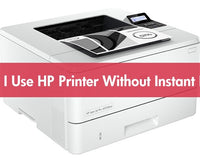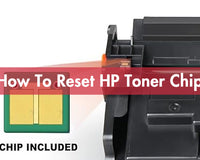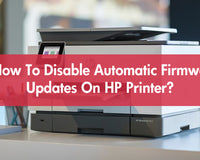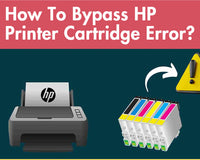Printers have become an indispensable tool in our daily office and life. However, even high-quality printers can encounter some common problems, the most common of which is paper jams. This blog will delve into the causes, repair methods, and preventive measures for paper jams. It will help you to solve the paper jam problem quickly.
What Causes Paper Jam In Printers?
- Poor Quality Printing Paper
- The Clear Paper Is Not Inserted Correctly
- The Paper Tray Guides Is Not Set Correctly
- Ambient Humidity Is Too High Or Too Low
- Excessive Static Electricity Builds Up On The Paper
- The Inside Of The Printer Is Dirty, Worn, Or Damaged
How To Fix A Paper Jam In A Printer?
While specific operations may vary from model to model, the basic steps for most printers are similar. The following is a general guide that applies to most printers, but please note that you may need to adapt it to the specific instructions for the printer model you are using.
Check The Condition Of The Paper
Please follow these guidelines to check the condition of the paper you are using:
1. Replace any torn, dusty, curled, wrinkled, or folded paper.
2. Remove any staples, paper clips, or self-adhesive notes.
3. Use paper types and weights supported by the printer.
4. Use paper that has yet to be printed or copied on.
Load Paper Correctly In The Input Tray

1. Load paper into the main input tray. Make sure the stack of paper is not taller than the marks on the sides of the paper width guides.
2. Verify that there are no pieces of paper, staples, paper clips, or other debris in the paper path.
3. Slide in the paper width and length guides until they stop at the edges. Please do not push the guides so far that they bend the paper.
4. Straighten the pages and adjust the paper width guides to center the paper.
5. Ensure the paper is loaded correctly, then insert the tray.
6. Verify that there are no pieces of paper, staples, paper clips, or other debris in the ADF path.
7. Load the original document print in the document feeder tray. Gently slide the document into the printer as far as it can go. Note: Only load up to 35 pages in the ADF. Larger stacks of paper can lead to pick problems.
8. Slide in the paper width guides until they are snug against the paper. Please do not push the paper width guides in so far that they bend the paper.
9. Try to copy or scan again.
Adjusting The Paper Guides On The Paper Tray
Follow the steps below to make sure the paper guides are adjusted correctly.
1. Adjust the paper guides to the appropriate notches or marks in the tray. Note: Do not adjust the paper guides to fit snugly into the stack.
2. Make sure the paper guides in the tray are adjusted correctly for the size of paper you are using. The arrows on the pallet rails should align with the markings on the pallet.
3. Follow these guidelines to ensure the tray is not overfilled:
- Check the stacking height markings inside the pallet.
- If the tray is too full, remove the stack of paper from the tray.
- Arrange the stack of paper, and then load some of the paper into the paper tray. Note: The tabs next to the marks help hold the paper in the correct position as it enters the printer.
4. Try printing and see if the problem persists.
Check The Environment
Different models of printers may have slightly different requirements for ambient humidity. Therefore, for the most accurate humidity requirements, it is recommended to refer to your specific printer's user manual or contact HP technical support for details.
The following description is developed using the HP LaserJet Pro MFP M479dw printer as an example.
The HP LaserJet Pro MFP M479dw printer is suitable for humidity ranging from 10% to 80% relative humidity. The printer can maintain good working conditions within this humidity range and ensure printing quality and stability. If the ambient humidity exceeds 80%, the paper may absorb moisture and deform, increasing the risk of paper jams. If the ambient humidity is below 10%, the paper may be too dry and easily generate static electricity, which may also cause paper jams or print quality problems. Therefore, to maintain the normal operation and print quality of the HP LaserJet Pro MFP M479dw printer, it is recommended to keep the ambient humidity within this range when using it. The ambient humidity can be adjusted through indoor air conditioners, humidifiers, and other equipment to meet the printer's requirements.
How To Avoid Paper Jam In Printer?
1. Clean the printer regularly: Clean the external and internal parts of the printer regularly, including the input box, output box, paper feed roller, etc., to ensure that there is no dust and debris inside the printer.
2. Use high-quality consumables: Choose to use high-quality paper and toner cartridges, and avoid using expired or damaged consumables to ensure print quality and the normal operation of the printer. You can choose True Image toner cartridges or ink cartridges. Taking the HP LaserJet Pro MFP M479dw as an example, True Image's HP 415A toner cartridge is specially designed for the HP LaserJet Pro MFP M479dw printer. It is perfectly compatible with this printer and can provide clear, high-quality printing results. In addition, True Image also offers various models of high-quality toner cartridges and ink cartridges, so it is recommended to give them priority when choosing consumables.
3. Check the paper quality: Check whether the paper is flat and without creases before printing. Avoid using curled or damaged paper to reduce the possibility of paper jams.
4. Choose the appropriate paper type and size: Choose the appropriate paper type and size according to the printing task and avoid using incompatible paper to reduce the risk of paper jams.
Conclusion
Paper jams are one of the common printer failures, but by understanding the causes of paper jams and taking corresponding solutions, we can effectively solve and prevent paper jams. When jamming printer, we should pay attention to the quality of the paper, load the paper correctly, adjust the paper guides, check the environmental humidity and other aspects, and clean and maintain the printer regularly. Only in this way can we ensure the normal operation and efficient output of the printer, bringing more convenience to our office and life.
















